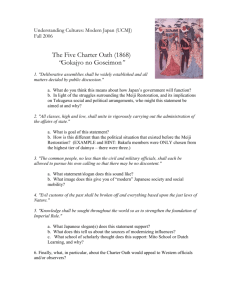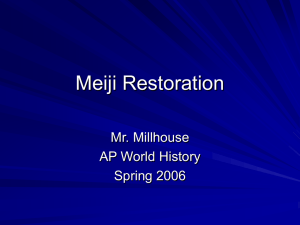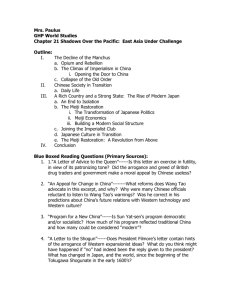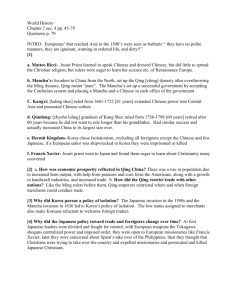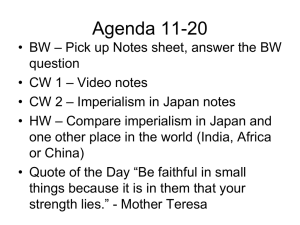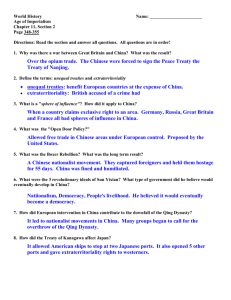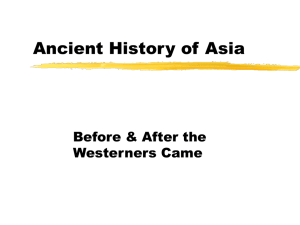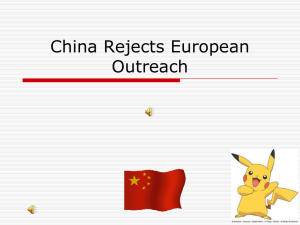World Civilization Review: Asia
advertisement
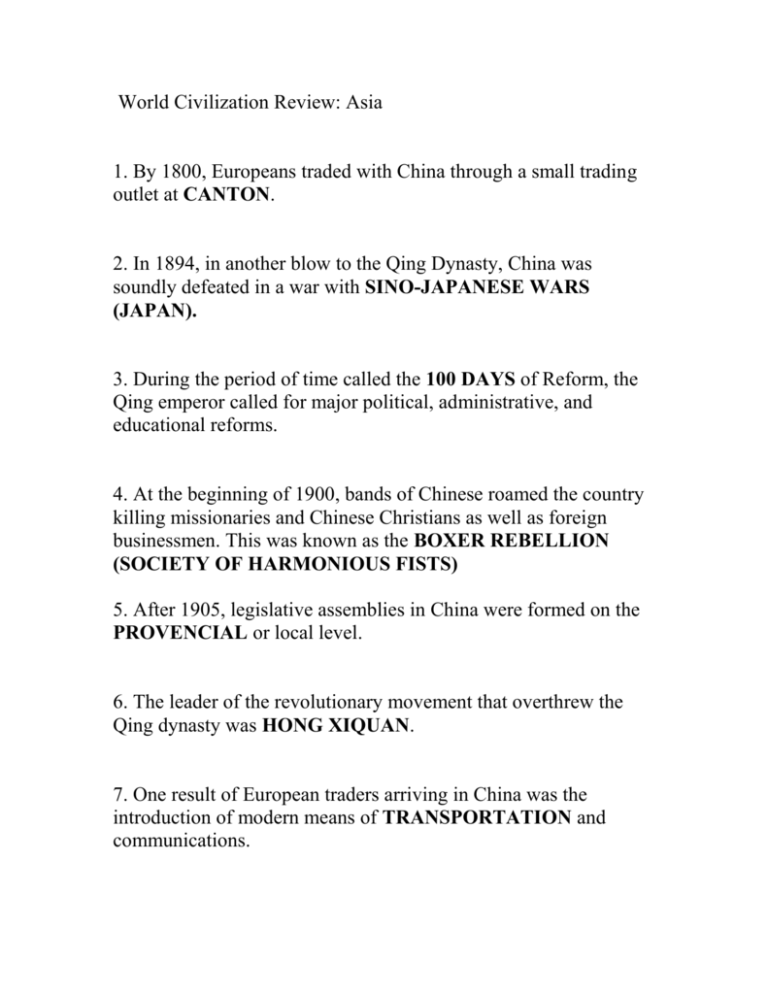
World Civilization Review: Asia 1. By 1800, Europeans traded with China through a small trading outlet at CANTON. 2. In 1894, in another blow to the Qing Dynasty, China was soundly defeated in a war with SINO-JAPANESE WARS (JAPAN). 3. During the period of time called the 100 DAYS of Reform, the Qing emperor called for major political, administrative, and educational reforms. 4. At the beginning of 1900, bands of Chinese roamed the country killing missionaries and Chinese Christians as well as foreign businessmen. This was known as the BOXER REBELLION (SOCIETY OF HARMONIOUS FISTS) 5. After 1905, legislative assemblies in China were formed on the PROVENCIAL or local level. 6. The leader of the revolutionary movement that overthrew the Qing dynasty was HONG XIQUAN. 7. One result of European traders arriving in China was the introduction of modern means of TRANSPORTATION and communications. 8. Radical reforms in China were aimed at the elimination of traditional culture, condemning it as a tool of THE EMPIRE. 9. The door to Japan was opened to the United States by the Treaty of KANAGAWA. 10. After the Meiji Restoration, the political system was democratic in form but AUTHORITARIAN in practice. 11. The result of the Meiji land reform program made the traditional lands of the daimyo the property of the EMPEROR. 12. Women in Japan were expected to adhere to the “THREE OBEDIENCES”: child to father, wife to husband, and widow to son. 13. This was a conflict resulting from the Chinese attempt to blockade Guangzhou to keep out British traders OPIUM WARS 14. TAI PING REBELLION was caused by the failure of the Chinese government to deal with pressing internal economic problems 15. Who launched the One Hundred Days of Reform? GUANG XU 16. Who was a young radical who formed the Revive China Society? SUN YAT-SEN 17. HENRY PUYI was China’s “last emperor” 18. This American’s fleet pressured the Japanese into opening trade relations with the United States. THE GREAT WHITE FLEET (MATTHEW PERRY) 19. What was the Japanese capital after the Meiji Restoration? EDO BAY (TOKYO) 20. What was the practice of Europeans being governed by their own laws while living on Chinese soil? EXTRATERRORALITY 21. What areas where the European states had exclusive trading rights in China? SPHERES OF INFLUENCE 22. Which leader from Japan traveled to Great Britain, France, Germany, and the United States to study their governments? ITO HIROBUMI 23. Which treaty ended first Opium War? TREATY OF NANJING 24. Which Christian convert viewed himself as the younger brother of Jesus Christ? HUANG XIQUAN 25. Who proclaimed that China should have an Open Door policy? JOHN HAY 26. This was the popular name given to the members of the Society of Harmonious Fists. BOXERS 27. Who agreed to serve as president of a new Chinese republic after the collapse of the Qing dynasty? GENERAL YUAN SHIGAI 28. Which Japanese government was known as the “Enlightened Rule?” MEIJI 29. Japan surprise attacked this naval base. PEARL HARBOR 30. The idea to adopt Western technology; retain Confucian values. SELF Strengthening 31. This historical figure opposed the emperor’s reforms and imprisoned him. Who was she? XI CI 32. Who governed by the daimyo after the Meiji Restoration? SAT CHO Know all your major figures, treaties and events. Essay: Describe the effects of Westerners on Chinese and Japanese societies? How did these societies evolve from the 1500s to the 1900s. Explain the fall of the Qing Dynasty starting with the reign on KongXi. What were the external and internal pressures?
